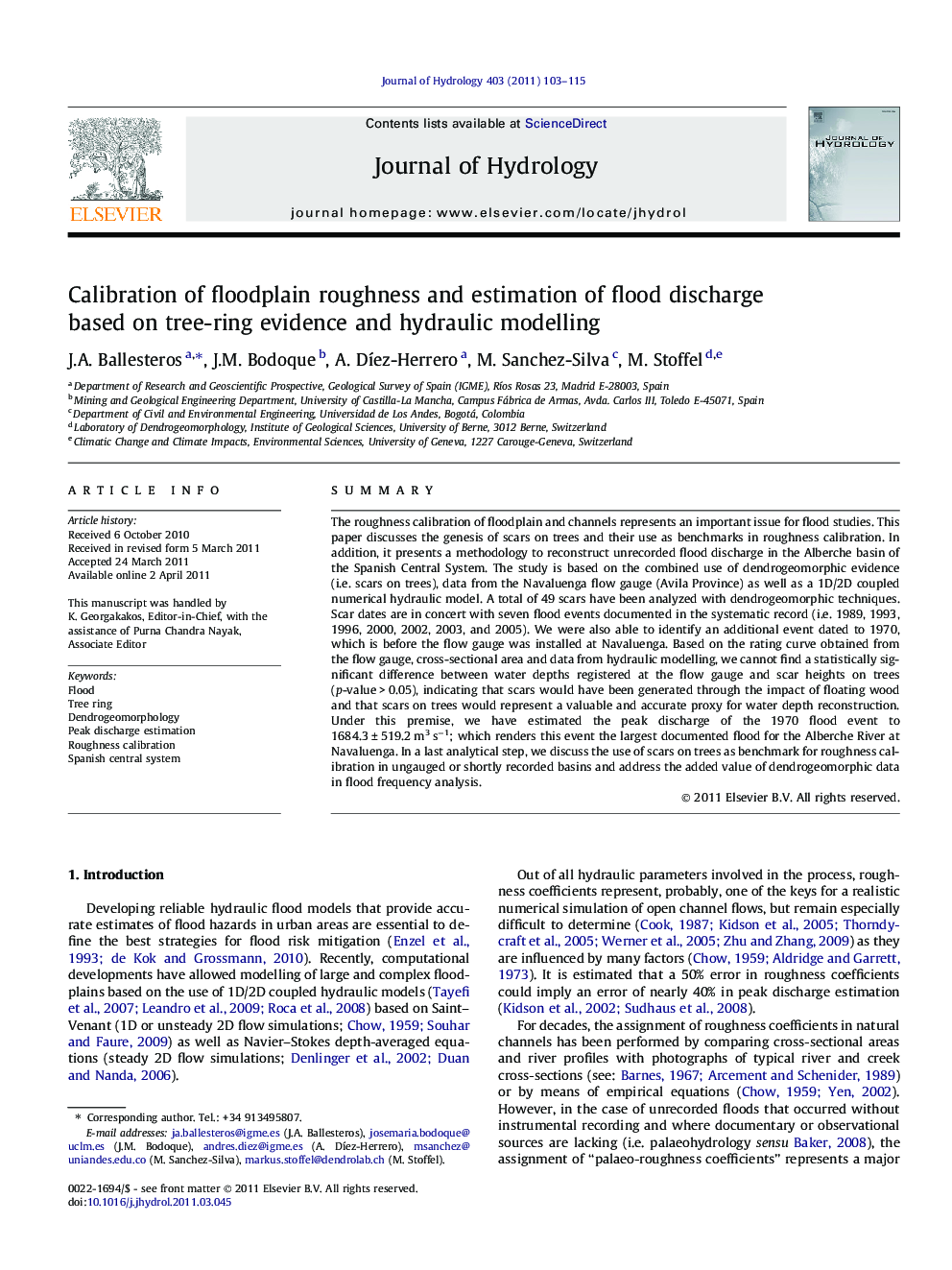| کد مقاله | کد نشریه | سال انتشار | مقاله انگلیسی | نسخه تمام متن |
|---|---|---|---|---|
| 4577651 | 1630022 | 2011 | 13 صفحه PDF | دانلود رایگان |

SummaryThe roughness calibration of floodplain and channels represents an important issue for flood studies. This paper discusses the genesis of scars on trees and their use as benchmarks in roughness calibration. In addition, it presents a methodology to reconstruct unrecorded flood discharge in the Alberche basin of the Spanish Central System. The study is based on the combined use of dendrogeomorphic evidence (i.e. scars on trees), data from the Navaluenga flow gauge (Avila Province) as well as a 1D/2D coupled numerical hydraulic model. A total of 49 scars have been analyzed with dendrogeomorphic techniques. Scar dates are in concert with seven flood events documented in the systematic record (i.e. 1989, 1993, 1996, 2000, 2002, 2003, and 2005). We were also able to identify an additional event dated to 1970, which is before the flow gauge was installed at Navaluenga. Based on the rating curve obtained from the flow gauge, cross-sectional area and data from hydraulic modelling, we cannot find a statistically significant difference between water depths registered at the flow gauge and scar heights on trees (p-value > 0.05), indicating that scars would have been generated through the impact of floating wood and that scars on trees would represent a valuable and accurate proxy for water depth reconstruction. Under this premise, we have estimated the peak discharge of the 1970 flood event to 1684.3 ± 519.2 m3 s−1; which renders this event the largest documented flood for the Alberche River at Navaluenga. In a last analytical step, we discuss the use of scars on trees as benchmark for roughness calibration in ungauged or shortly recorded basins and address the added value of dendrogeomorphic data in flood frequency analysis.
Figure optionsDownload as PowerPoint slideHighlights
► The genesis of scar on trees can determine its use in palaeoflood studies.
► Scar on trees inflicted by woody are indicating maximum flood stage at hydrograph moment given.
► These scars could be used as benchmark in roughness calibration and for peak discharge estimations.
► Palaeodischarge estimation using tree ring evidence leads an impact in the flood frequency.
Journal: Journal of Hydrology - Volume 403, Issues 1–2, 6 June 2011, Pages 103–115